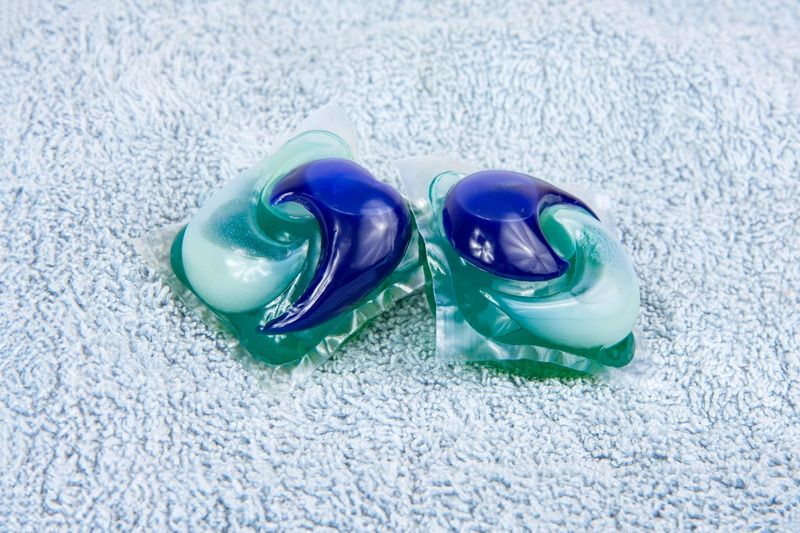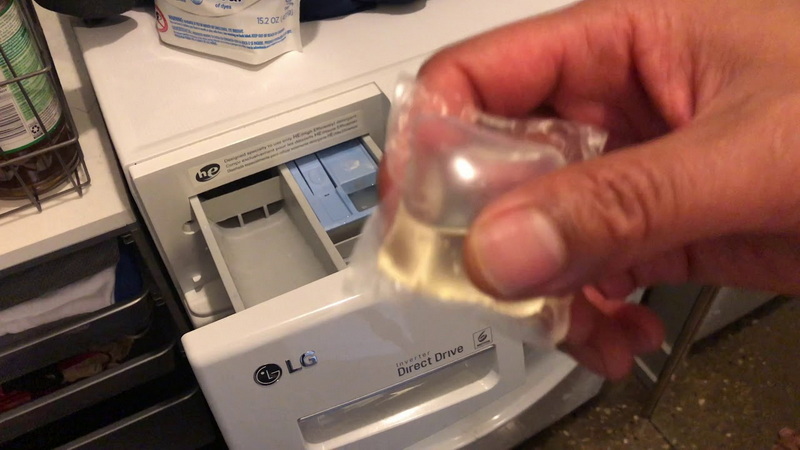Dongguan UFine Daily Chemical Co.,Ltd.
- All
- Product Name
- Product Keyword
- Product Model
- Product Summary
- Product Description
- Multi Field Search
Views: 222 Author: Tomorrow Publish Time: 11-15-2025 Origin: Site











Content Menu
● How Pods Are Intended to Be Used
● Why People Consider Putting Pods in the Cup
● Practical Guidelines for Safe Use
● Differences Between Pod Placement Scenarios
● Environmental Considerations
● Potential Scenarios and Their Implications
● Quality and Fabric Care Considerations
● Advanced Considerations for Different Machines
● FAQ
>> 1. Is it safe to put a laundry pod in the detergent cup?
>> 2. Will placing a pod in the cup affect cleaning performance?
>> 3. What should I do if a pod leaks or breaks in the cup?
>> 4. Are there benefits to placing pods in the drum versus the cup?
>> 5. How can I keep children safe from laundry pods?
Laundry pods offer convenience with pre-measured doses, reducing mess and guesswork during laundry day. The central question explored here is whether it is acceptable to place a laundry pod in the washing machine's cup or dispenser compartment, instead of directly into the drum with the laundry. The discussion covers manufacturer guidance, safety considerations, machine-specific behavior, and practical tips to achieve optimal cleaning results while minimizing risks.

Laundry pods are compact, water-soluble packets containing concentrated detergent, sometimes with stain removers or fabric softeners. The pod's outer shell dissolves when exposed to water, releasing cleaning agents into the wash. The design aims to ensure even distribution of detergent as clothes tumble through the drum.
- Most manufacturers recommend placing pods directly into the drum before loading clothes. This ensures rapid dissolution and uniform distribution of detergent throughout the wash cycle.
- Some dishwasher or washing machine models include dispensers designed for liquids, gels, or powders. In certain cases, pods may be used in the dispenser if the product and machine specifications explicitly permit it.
- Always follow the pod's packaging instructions and your appliance manual. Formulations and dispensing mechanisms vary by brand and model.
- Misconception that the dispenser cup is a universal receptacle for all detergent forms.
- Perceived convenience or habit from using liquid detergents or other products that are routinely dispensed from the cup.
- In some machines, the dispenser is designed to release contents at specific times or stages of the cycle, which may tempt users to experiment with pods.
- Pod exposure poses ingestion risks, particularly to children and pets. The bright colors and small size can be enticing, making careful storage essential.
- If a pod is placed in the dispenser and water reaches it, the dissolution pattern may differ from the drum, potentially causing uneven cleaning or detergent residue.
- Spillage or leakage inside the cup can lead to excessive sudsing, foaming, or leakage from the washer, posing a slip hazard or chemical exposure risk.
- Always store pods in a childproof location and handle them with dry hands to avoid accidental contact with eyes or skin.
- Pod dissolution relies on direct contact with water and agitation. In the dispenser, the water flow may be slower or differently timed, which can alter dissolution rates.
- Some dispensers are calibrated for liquid detergents with a slow-release mechanism. Incompatible use may result in incomplete dissolution or delayed release, reducing cleaning efficiency.
- The interaction between the cup's mechanism and the pod's dissolution chemistry can influence rinse performance and fabric feel.
- Preferred method: place pods directly in the drum before adding laundry, following the packaging directions for load size and soil level.
- If the dispenser method is explicitly approved by both the machine manufacturer and the detergent producer, follow those instructions precisely.
- Keep detergents, including pods, out of reach of children and pets. Use dry hands when handling pods to minimize slipping and avoid touching face or eyes.
- Use the recommended amount of detergent. Overuse can create excess suds, residue on fabrics, and longer rinse cycles.
- If a pod accidentally sits in the cup, monitor for dissolution issues or sudsing, and be prepared to run a rinse or empty cycle to clear residual product.
- Drum placement: The pod dissolves quickly as clothes tumble, delivering even cleaning action.
- Cup placement (where allowed): Behavior depends on machine design and product specification; exact results can vary.
- Powder or liquid detergents: Some machines have specialized compartments or seals; verify compatibility before attempting non-standard usage.

- Pods always dissolve in the cup: Dissolution is highly dependent on water exposure and cycle design; cups may restrict dissolution or cause uneven release.
- Pods are safe to swallow or taste: Extremely hazardous; keep away from children and pets and ensure proper storage.
- Any pod can be used in any dispenser: Not true; always verify compatibility between the product and the appliance.
- Pods can be designed with reduced packaging and concentrated formulas to minimize waste. Yet improper use may lead to repeated cycles due to residue or incomplete dissolution, which can offset environmental benefits.
- For high-efficiency machines, use pods in the drum as they are designed to work with the tumble action and lower water volumes typical of HE cycles.
- If a family uses a shared laundry area, designate a specific storage area for pods that is secure and organized to minimize accidental exposure.
- When teaching children about laundry safety, emphasize that pods are powerful cleaning agents and should never be touched or handled without adult supervision.
- In households with hard water, consider using a pod formulated for hard water or adjusting water hardness settings as recommended by the manufacturer to prevent mineral buildup on fabrics.
- A porch or laundry room where a pod is left exposed: Ensure secure storage to prevent curious pets or children from accessing pods, which can lead to accidental ingestion.
- Washing heavily soiled items: Pods in the drum provide rapid dissolution and more uniform cleaning. In a dispenser, the dissolution may be uneven, potentially leaving stains or causing fiber damage if residues remain.
- Wash cycles with mixed fabrics: Consistent detergent distribution is crucial to protect delicate fabrics; drum placement is generally preferred to reduce the risk of residue or damage.
- Detergent residue can cause irritation or reduce fabric softness. Ensuring proper dissolution and thorough rinsing reduces these risks.
- The choice of detergent should align with fabric care labels. Pods with added fabric softeners or color-safe formulations may have different effects on certain textiles.
- Front-loaders: They often have specific dispensers for detergent and fabric softener. Pods are typically recommended to be placed in the drum, as improper placement can affect dispensers and sensor readings.
- Top-loaders: Depending on the model and cycle design, some may tolerate dispenser pod placement, but this is not universal. Always review the model's manual.
- Smart washers: Some advanced machines may have programmable cycles that can adapt to pod usage in the dispenser. However, this is not common and still requires manufacturer confirmation.
Putting laundry pods in the cup is not universally advisable. The drum remains the most reliable and recommended placement for most households, ensuring consistent dissolution, even distribution, and optimal cleaning performance. Only place pods in the dispenser if both the machine and the detergent manufacturer explicitly authorize this use. Prioritize safety, follow instructions, and consider machine design and water conditions to maintain laundry quality and minimize risks.

Answer: Generally not recommended unless explicitly approved by both the washing machine and detergent manufacturers. Pods rely on direct water contact in the drum for proper dissolution and distribution.
Answer: It can, because dissolution may be uneven or delayed in the cup, leading to insufficient cleaning or fabric residue. Drum placement is the preferred method.
Answer: Stop the cycle, remove the cup if possible, and run a rinse or empty cycle to flush out any remaining detergent. Clean any residue from the dispenser area and wash hands thoroughly.
Answer: Yes. Drum placement ensures quick dissolution, even distribution, and reduces the risk of dispenser-related issues or residue on fabrics.
Answer: Store pods in a secure, childproof location, use dry hands when handling, supervise children around laundry areas, and consider using a container with a child-resistant cap if available.